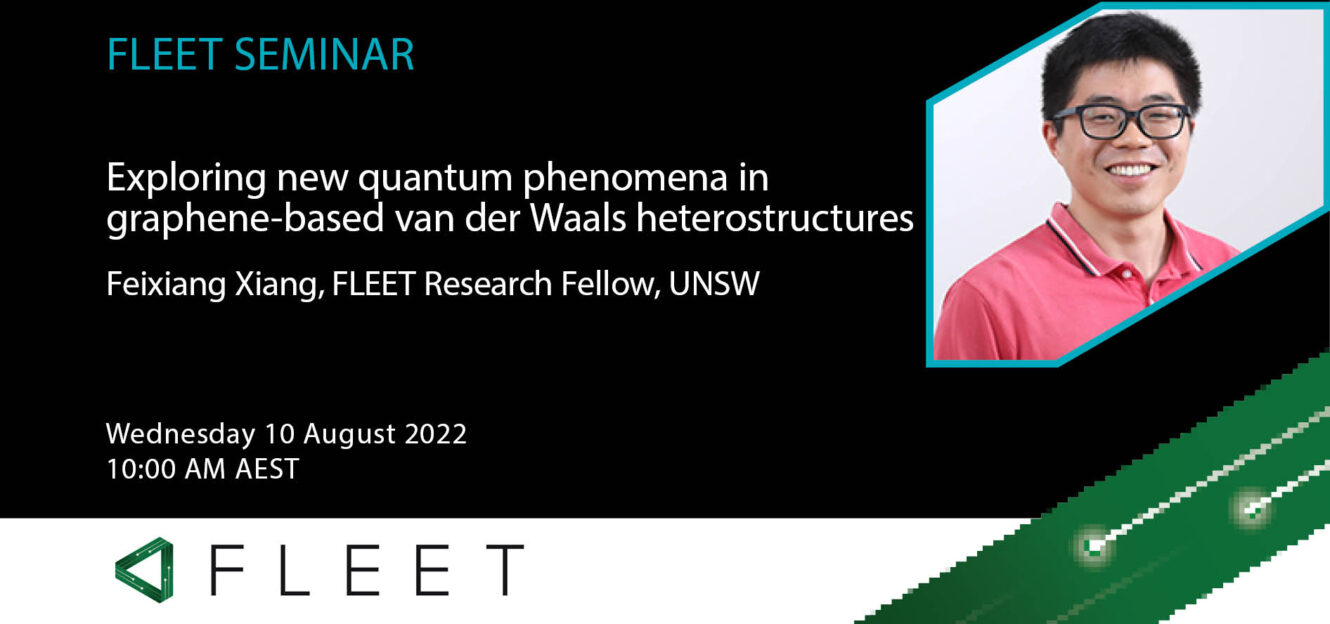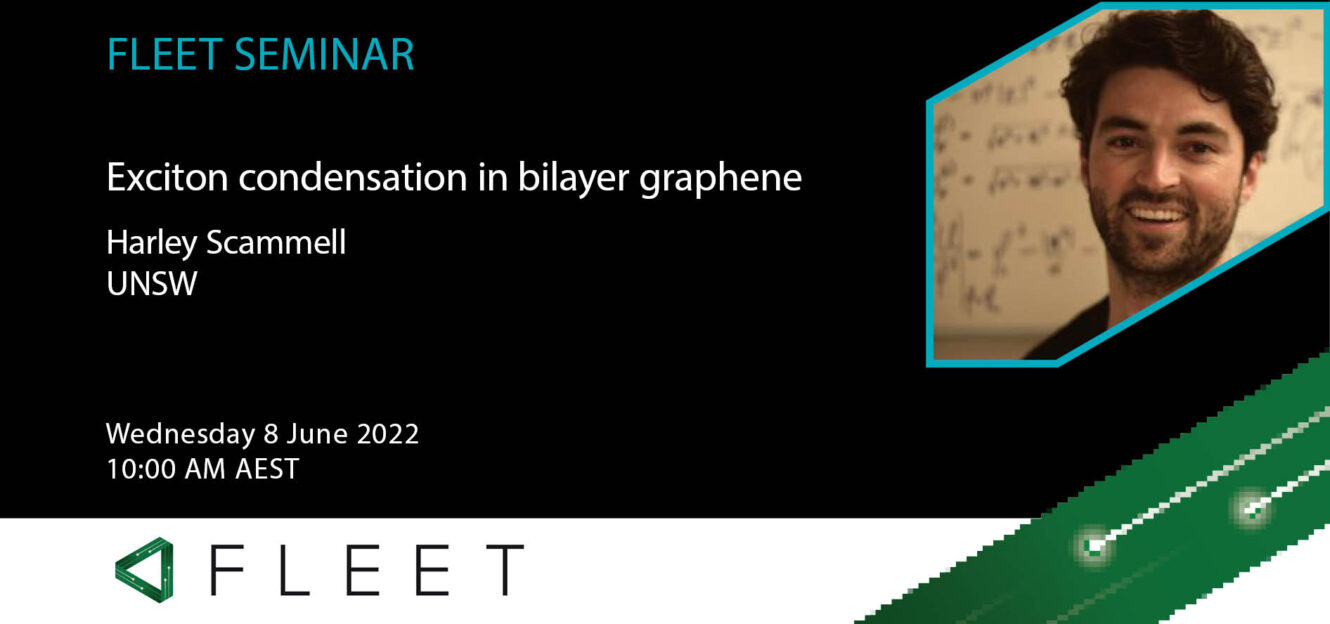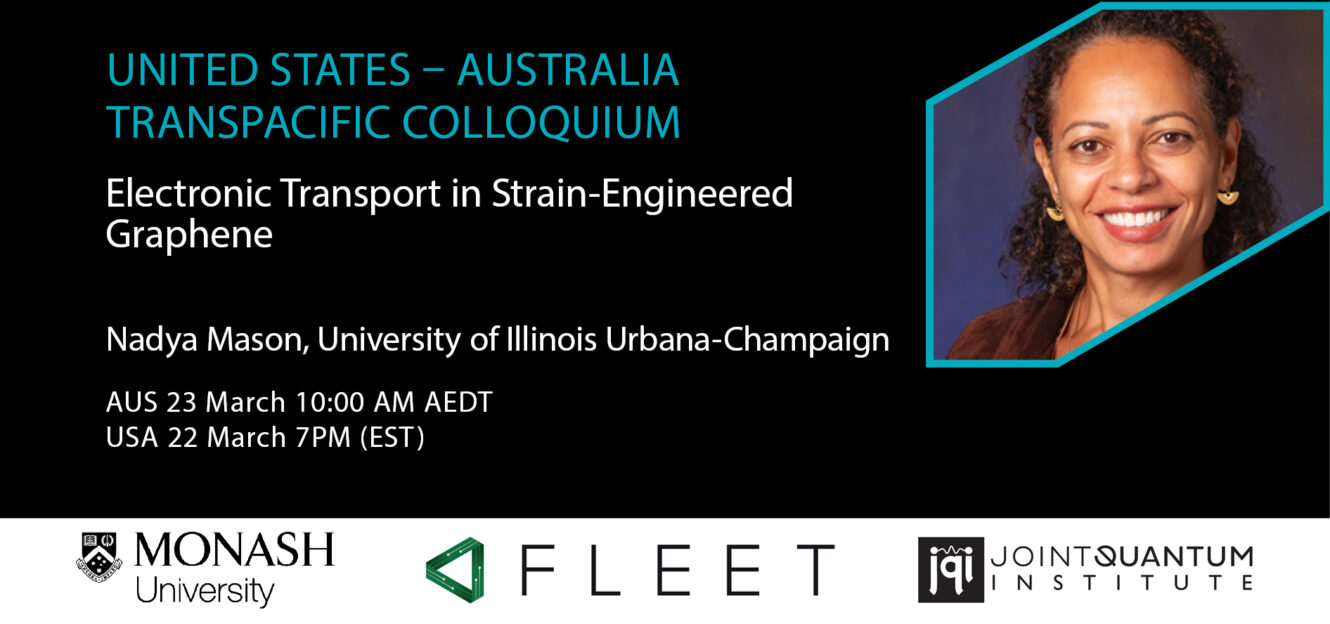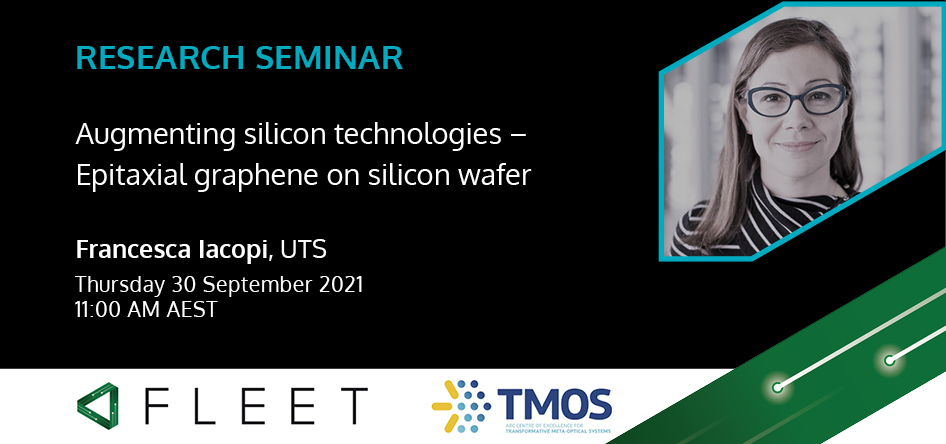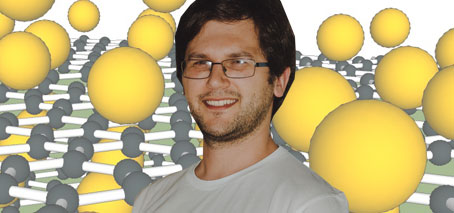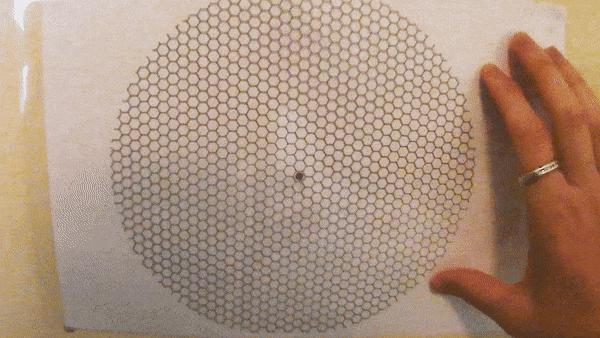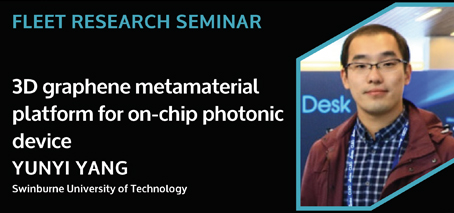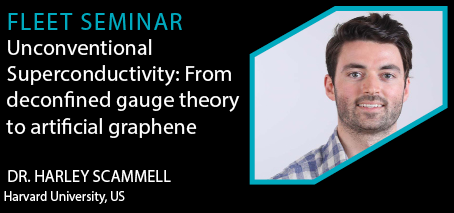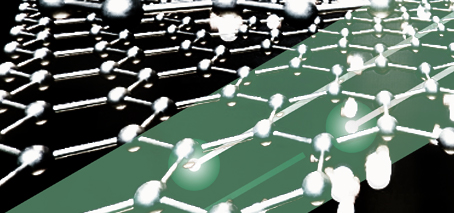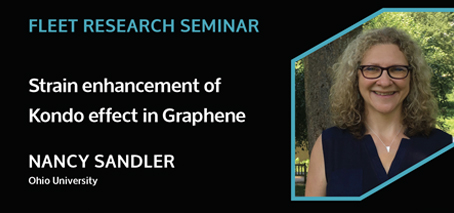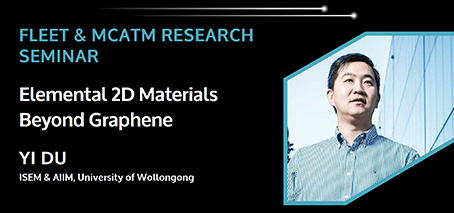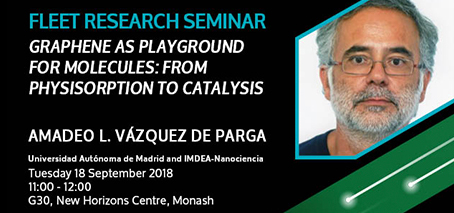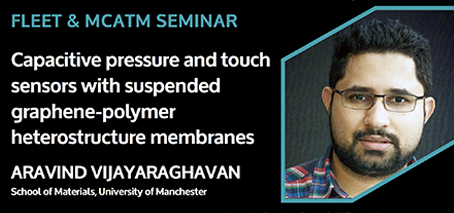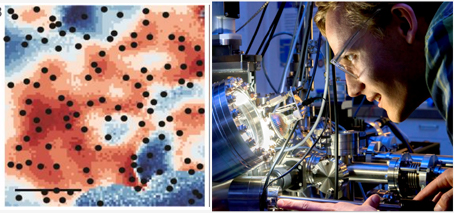TBA About the presenter Feixiang Xiang is a Research Fellow at UNSW with CI Alex Hamilton. He is studying the emergent physical properties of topological matter using quantum transport measurements, as part of FLEET’s Research Theme 1, Topological Materials.
Etch-less micropatterned epitaxial graphene via 2D and 3D site-selective growth
About the presenter Prof Francesca Iacopi has over 20 years’ industrial and academic research expertise in semiconductor technologies, with over 130 peer-reviewed publications and 9 granted US patents. She is currently head of Communications and Electronics, in the Faculty of Engineering and IT, UTS. Her research focuses on the translation of basic scientific advances in nanomaterials and novel device concepts …
Wearable EEG sensor with Epitaxial Graphene
The Challenge Deploying a high-efficiency, non-invasive Brain Computer Interface (BCI) system for hands free control of electronic devices, cognitive monitoring or entertainment applications. Most non-invasive BCI systems use electroencephalograph (EEG) nodes to read out bio-potentials from the scalp. Commercially-available dry EEG electrodes are often made of metals or conductive fabric and typically suffer from high impedance and low signal-to-noise ratio, …
Terahertz frequency switching in graphene
The Challenge The International Energy Agency (IEA) has identified computing, and in particular data centres, as a rising source of energy usage. Energy generation continues to be dominated by the burning of fossil fuels such as gas, coal and oil – all of which produce carbon dioxide (CO2 ), which contributes to the Greenhouse effect and climate change. The Solution …
Visualisation of strain-induced Landau levels in a graphene – black phosphorous heterostructure
Graphene, with its linear band dispersion at low energy and massless Dirac-like fermions, allows the Quantum Hall effect (QHE) to be observed at room temperature under a strong magnetic field[1]. In the QHE, electrons will travel in quantized cyclotron orbits with discrete energy levels called Landau levels (LLs). Yet, the massless Dirac-like behaviour of graphene provides a potential avenue to …
Strong signature of Landau level fan from high order moiré pattern in double aligned graphene heterostructures
In this work, we report the transport measurement of double aligned graphene heterostructures. We observe strong signature of Landau level fan of a second order moiré pattern due to the interference of the moiré patterns from top and bottom graphene surfaces. The periodicity of the second order moiré pattern is about double the maximum periodicity of moiré patterns in graphene …
Theoretical modelling on new level crossings and electron-hole asymmetry in Landau octet of bilayer graphene
The highly tunable band structure and eightfold degeneracy of the zero-energy Landau level (zLL) of bilayer graphene (BLG) makes it an ideal platform for engineering new quantum Hall states, denoted by the orbital, valley, and spin quantum numbers. However, determining the filling sequence of these quantum states at different electric fields is still an unresolved question. We build an effective …
Dramatic increase of viscous effects in magnetohydrodynamics in graphene
Previously we developed theory to increase viscous effects in hydrodynamic flow in a GaAs heterostructure using 1D modulated superlattice of micromagnets. This work featured the extraordinary no-stress boundary condition that has only been experimentally realised in electron hydrodynamics in GaAs. We now extend this work to the more general finite-slip boundary condition and detail an experimental set up for monolayer …
FLEET Seminar. The Carbon Scaffold: Building Next-Generation Materials and Devices on Quasi-freestanding Epitaxial Graphene
Assistant Professor Kevin M. Daniels, University of Maryland Missed the seminar? Watch it on FLEET’s YouTube channel Two-dimensional materials possess unique mechanical, optical, and electronic properties that can exceed those of their bulk crystal counterparts. For example, graphene, a two-dimensional material composed of a single layer of carbon atoms, exhibits exceptionally high carrier mobilities (~100,000 cm2/Vs), high surface area (2630 …
Apparent strange metal behavior in small angle twisted bilayer graphene
About the presenter AI Shaffique Adam is currently an Associate Professor, Yale-NUS College and an NRF Fellow. A/Prof Adam is an expert in the theoretical physics of Dirac systems. Within FLEET, he is working on gaining an understanding of the electronic transport and other properties of novel Dirac semimetals, as well as the conventional insulator to topological insulator transition in …
Electric-field-control of broadband THz conductivity in graphene: from Drude to non-Drude regime
About the presenter Phat Tan Nguyen is a PhD student working under the supervision of A/Prof Agustin Schiffrin and Dr Gary Beane at Monash University, where he is investigating optically-driven topological phases of matter using terahertz time-domain spectroscopy and pump-probe spectroscopy with sub-picosecond time resolution, and at the scale of a single atom. He is mainly involved in Research theme …
FLEET seminar. Exploring new quantum phenomena in graphene-based van der Waals heterostructures
Feixiang Xiang, FLEET Research Fellow (UNSW) launch zoom Graphene-based van der Waals heterostructures have unique electronic properties and there has been recent progress on fabricating high-quality samples that has attracted lots of interest from those investigating new quantum phenomena. The topological and strongly correlated states are two particularly interesting quantum phenomena, because of their interesting fundamental physics and their potential …
FLEET seminar: Exciton condensation in bilayer graphene
Dr Harley Scammell, UNSW Missed the talk? Catch up on YouTube By analogy with BCS superconductivity, it has long been expected that excitons condense in (nearly) particle-hole symmetric two-dimensional semimetals. However, in the absence of a magnetic field, very few examples are known. And I will not be providing one. Instead, I will propose an alternate route to exciton condensation. …
Electronic Transport in Strain-Engineered Graphene
Professor Nadya Mason, Rosalyn Sussman Yalow Professor in Physics, University of Illinois Urbana-Champaign Missed the seminar. Catch up on YouTube There is wide interest in using strain-engineering to modify the physical properties of 2D materials, for both basic science and applications. Deformations of graphene, for example, can lead to the opening of band gaps, as well as the generation of …
TMOS-FLEET seminar: Augmenting Silicon Technologies with Graphene: Epitaxial Graphene on Silicon Wafers
Professor Francesca Iacopi, Professor of Electronics in the Faculty of Engineering and IT, University of Technology Sydney, Chief Investigator and Chair of Industry Liaison of the ARC Centre of Excellence in Transformative Meta-Optical Systems (TMOS), and Associate Investigator in FLEET. Missed the presentation. Catch it all on FLEET YouTube Graphene could bring a variety of exceptional benefits in areas from …
Intrinsic and extrinsic effects on Dirac fermions in graphene covered by Ga2O3
About the presenter Matthew Gebert is a PhD student in Prof Michael Fuhrer’s group at Monash University, investigating the interface between the 2D surface state of a 3D topological insulator (TI) with a thin, insulating ferromagnetic material. The aims of the project are to understand the effects of time-reversal symmetry breaking on the topological insulator and to investigate the …
Double Moire superlattices in hBN encapsulated graphene
Isolation of monolayer and few-layer graphene and other two-dimensional materials provides an opportunity to fabricate new types of heterostructures by stacking them layer by layer in a designed sequence [1]. Previous studies show that putting a graphene on a hexagonal boron nitride (hBN) substrate could form a Moiré pattern which generates a periodic potential and creates new Dirac points in …
Epitaxial graphene on cubic silicon carbide: transport, tunability and HF
About the presenters Dr Aiswarya Pradeepkumar and PhD student David Katzmarek work with Prof Francesca Iacopi, head of Communications and Electronics, in the Faculty of Engineering and IT, UTS. Within FLEET, Francesca is an associate investigator working on graphene for low-energy electronic devices. She also liaises with the IRDS, advising potential applications and integration strategies for novel technologies generated by FLEET …
What happens between the sheets? ‘Floating’ graphene on a bed of calcium atoms
Adding calcium to graphene creates an extremely-promising superconductor, but where does the calcium go? Adding calcium to a composite graphene-substrate structure creates a high transition-temperature (Tc) superconductor. In a new study, an Australian-led team has for the first time confirmed what actually happens to those calcium atoms: surprising everyone, the calcium goes underneath both the upper graphene sheet and a …
Explainer: Moire patterns in graphene and plastic
A recent FLEET homescience exercise explained how simple geometric patterns printed on transparency (‘overhead projector sheets’, to those of us old enough to remember such technology), and overlaid at varying angles, produced a combined ‘Moire’ pattern of varying dimensions. Two sheets of repeating squares produces a Moire pattern of larger squares. Two sheets of repeating triangles produces a Moire pattern …
Some theoretical results for twisted bilayer graphene near magic angle
When the relative rotation between two sheets of graphene is set to be close to special angles (referred to in the literature as “magic angles”), the low-energy effective theory features Dirac fermions with very flat bands. Interest in understanding the competing mechanisms at play was reignited recently with the experimental observations of superconductivity and strongly correlated insulating phases in such …
FLEET Seminar: Yunyi Yang – 3D graphene metamaterial platform for on-chip photonic device
3D graphene metamaterial platform for on-chip photonic device Dr Yunyi Yang Centre for Micro-Photonics, Swinburne University of Technology, Melbourne, Australia All welcome! The seminar flyer can be downloaded here Abstract: Two-dimensional (2D) materials, especially for graphene-based materials, have attracted significant research interests due to their unique optical and electrical properties. These properties are only remained in 2D scale, which would …
FLEET Seminar: Dr Harley Scammell. Unconventional Superconductivity: From deconfined gauge theory to artificial graphene
Unconventional Superconductivity: From deconfined gauge theory to artificial graphene Dr. Harley Scammell, Harvard University, US All welcome! The seminar flyer can be downloaded clicking on this link Abstract: Unconventional superconductivity, which relies on non-phonon mediated pairing, typically emerges from nearby strongly correlated magnetic phases. However, the interplay between superconductivity and magnetism greatly complicates the theoretical description. In this talk, we …
I can’t believe it’s not graphene: nanoengineering artificial graphene
New facility improves study of ‘artificial graphene’ at FLEET ‘Like driving a new Maserati!’ The amazing electrical properties of graphene and other 2D, atomically-thin crystals are due to the symmetry of their lattice structure. For example, it is graphene’s famous ‘honeycomb’ lattice that causes electrons to act as they were massless – moving about 70 times faster than in silicon …
FLEET Seminar: Prof Nancy Sandler – Strain enhancement of Kondo effect in graphene
Strain enhancement of Kondo effect in graphene Prof Nancy Sandler, Ohio University All welcome! The seminar flyer can be downloaded clicking on this link Abstract: The study of magnetic impurities on pristine graphene and its corresponding Kondo physics, results on predictions of unusual features due to the linear vanishing density of states at the Dirac points. However, despite several attempts …
FLEET & MCATM Seminar: Yi Du – Elemental 2D Materials (Xenes) beyond Graphene
Elemental 2D Materials (Xenes) beyond Graphene Yi Du Institute for Superconducting and Electronic Materials, the Australian Institute for Innovative Materials, University of Wollongong All welcome! The seminar flyer can be downloaded at this link. About the Speaker: Dr Yi Du obtained his B.Eng in Beihang University in 2004 and his PhD in University of Wollongong in 2011. He was awarded …
Graphene+ 2018
Graphene+2018 is the debut annual conference of the newly formed Australian Graphene Industry Association (AGIA), a government-supported peak body for the graphene industry in Australia, created with the aim of positioning Australia at the forefront of advanced materials development globally. With speakers travelling from Europe, the US, and Asia to deliver analysis of future trends and developments in advanced manufacturing. …
FLEET Seminar: Graphene as playground for molecules: from physisorption to catalysis
Graphene as playground for molecules: from physisorption to catalysis Amadeo L. Vázquez de Parga Universidad Autónoma de Madrid and IMDEA-Nanociencia, Madrid, Spain All welcome! The seminar flyer can be downloaded here. Can’t be at Monash? You can also join via Zoom video conference via URL: https://monash.zoom.us/j/291267370 Abstract: Organic functionalisation of graphene has been suggested as an ideal tool to provide …
FLEET & MCATM Seminar: Aravind Vijayaraghavan – Graphene-based capacitive pressure and touch sensors
ARAVIND VIJAYARAGHAVAN Reader in Nanomaterials, School of Materials and the National Graphene Institute, University of Manchester Event Flyer can be downloaded here. All welcome! Abstract: Single layer chemical vapor deposited (CVD) graphene has shown great promise in enabling Micro and Nano-electromechanical Systems (MEMS/NEMS) that can outperform current state of the art. However, existing methods in forming single layer graphene electromechanical …
Electronically-smooth ‘3D graphene’: a bright future for trisodium bismuthide
Electronically-smooth nature of trisodium bismuthide makes it a viable alternative to graphene/h-BN Researchers have found that the topological material trisodium bismuthide (Na3Bi) can be manufactured to be as ‘electronically smooth’ as the highest-quality graphene-based alternative, while maintaining graphene’s high electron mobility. Na3Bi is a Topological Dirac Semimetal (TDS), considered a 3D equivalent of graphene in that it shows the same …


